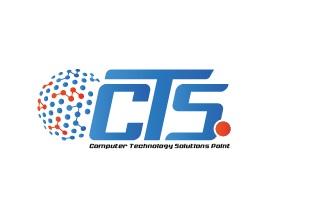-
Nieuws Feed
- EXPLORE
-
Pagina
-
Groepen
-
Events
-
Blogs
-
Marketplace
-
Offers
-
Jobs
-
Forums
Unlocking the Power of Network Memory

Introduction
Network memory represents a paradigm shift in how data is stored, accessed, and processed across interconnected systems. By enabling distributed memory sharing over a network, it eliminates traditional bottlenecks associated with localized storage systems and ushers in new efficiencies for data-driven industries.
What is Network Memory?
Network memory refers to the pooling of memory resources from multiple machines or devices in a network, allowing them to act as a single cohesive memory unit. Instead of relying on isolated storage or processing systems, network memory facilitates real-time data sharing and accessibility across nodes, improving both computational speed and storage efficiency.
In essence, it virtualizes memory across the network, making it appear as though all connected devices share a single, unified memory space.
How Network Memory Works
At its core, network memory relies on advanced communication protocols to manage data transfers between devices. It uses techniques like remote direct memory access (RDMA), which enables devices to access memory on remote machines without involving their CPUs. This approach reduces latency and increases throughput, making the system far more efficient than traditional file-sharing mechanisms.
To prevent bottlenecks, network memory systems also incorporate caching, synchronization, and error-handling algorithms. These ensure that data integrity and consistency are maintained even when accessed from multiple nodes simultaneously.
Applications of Network Memory
The implementation of network memory spans various industries and scenarios, reflecting its transformative potential.
High-Performance Computing (HPC)
In HPC environments, network memory allows supercomputers to access and share data across thousands of nodes seamlessly. This capability is critical for applications such as climate modeling, molecular simulations, and complex data analysis, where vast amounts of memory are required in real time.
Cloud Computing
Cloud service providers leverage network memory to optimize virtual machine (VM) performance. By sharing memory across a distributed system, VMs can access additional resources on demand, leading to enhanced scalability and reduced operational costs.
Artificial Intelligence and Machine Learning
AI and machine learning systems process massive datasets during training and inference. Network memory provides the high-speed, high-capacity data access needed to handle these demanding workloads efficiently, accelerating model development and deployment.
Internet of Things (IoT)
In IoT ecosystems, network memory facilitates efficient data aggregation from edge devices, enabling real-time analytics and decision-making without overburdening local resources.
Benefits of Network Memory
Network memory offers significant advantages that redefine the limits of modern computing systems.
Improved Efficiency
By removing the need to transfer large datasets to and from storage systems repeatedly, network memory reduces latency and optimizes resource utilization.
Scalability
Network memory systems are inherently scalable. Additional nodes can be added to the network seamlessly, increasing available memory capacity without major infrastructure overhauls.
Fault Tolerance
Advanced network memory solutions incorporate redundancy mechanisms, ensuring that data is recoverable even if a node fails. This enhances system reliability and uptime.
Cost Savings
Organizations save costs by pooling existing resources rather than investing in expensive, high-capacity local storage solutions.
Challenges of Implementing Network Memory
Despite its many benefits, network memory is not without challenges.
Latency Issues
Although network memory reduces latency compared to traditional methods, network conditions such as bandwidth limitations and congestion can still affect performance.
Complexity in Management
Coordinating memory across multiple nodes introduces complexity in terms of synchronization, data consistency, and security.
Security Concerns
Because network memory involves shared resources, it is susceptible to cyberattacks such as unauthorized access and data breaches. Advanced encryption and authentication protocols are necessary to mitigate these risks.
The Future of Network Memory
The future of network memory lies in further advancements in hardware, software, and protocols. Emerging technologies like 5G, edge computing, and quantum networks are poised to reduce latency and increase the robustness of network memory systems. Additionally, artificial intelligence-driven memory management tools are expected to make these systems smarter and more autonomous.
As businesses increasingly rely on distributed systems and massive datasets, the adoption of network memory will become a critical factor in staying competitive.
Conclusion
Network memory is revolutionizing how data is stored, accessed, and utilized in interconnected systems. By bridging the gap between isolated memory resources and distributed computing needs, it paves the way for more efficient, scalable, and robust solutions across industries. While challenges remain, ongoing innovation promises to unlock even greater potential for this transformative technology.
We are excited to announce the **launch of the Sharkbow Marketplace!** 🎉 Now you can:
- 🛍️ List and sell your products – Open your own store easily.
- 📦 Manage orders effortlessly – Track sales and communicate with buyers.
- 🚀 Reach thousands of buyers – Expand your business with ease.
Start selling today and grow your online business on Sharkbow! 🛒
Open Your Store 🚀 ✖🚀 What Can You Do on Sharkbow?
Sharkbow.com gives you endless possibilities! Explore these powerful features and start creating today:
- 📝 Create Posts – Share your thoughts with the world.
- 🎬 Create Reels – Short videos that capture big moments.
- 📺 Create Watch Videos – Upload long-form content for your audience.
- 📝 Write Blogs – Share stories, insights, and experiences.
- 🛍️ Sell Products – Launch and manage your online store.
- 📣 Create Pages – Build your brand, business, or project.
- 🎉 Create Events – Plan and promote your upcoming events.
- 👥 Create Groups – Connect and build communities.
- ⏳ Create Stories – Share 24-hour disappearing updates.
Join Sharkbow today and make the most out of these features! 🚀
Start Creating Now 🚀- Art
- Causes
- Crafts
- Dance
- Drinks
- Film
- Fitness
- Food
- Spellen
- Gardening
- Health
- Home
- Literature
- Music
- Networking
- Other
- Party
- Religion
- Shopping
- Sports
- Theater
- Wellness
